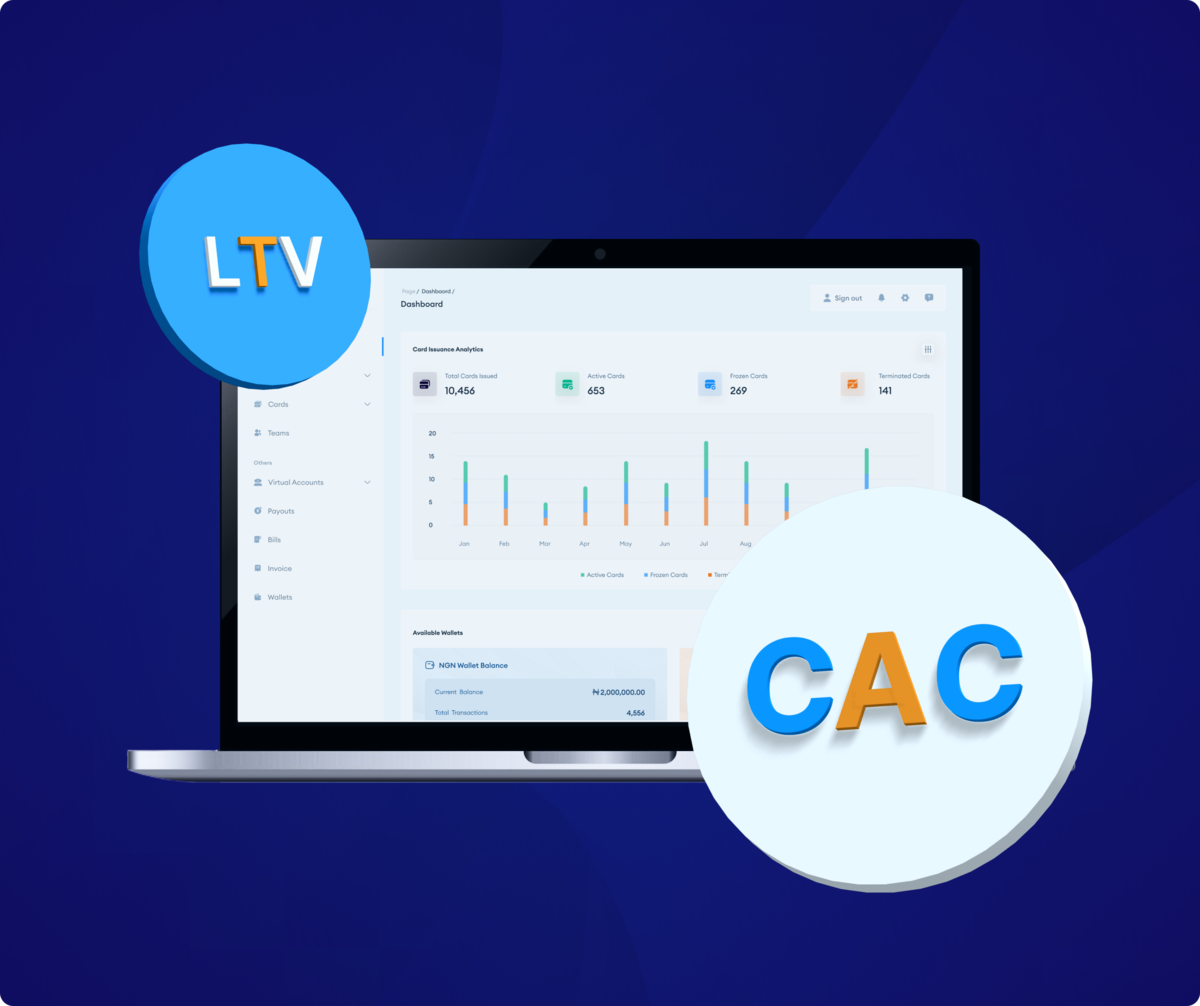Success in fintech relies on tracking key financial metrics that help businesses navigate competitive challenges and make informed decisions. Among these, Customer Acquisition Cost (CAC), Lifetime Value (LTV), and Gross Margins are critical for optimizing growth, improving profitability, and ensuring long-term sustainability.
Let’s explore how fintech leaders can leverage these metrics effectively, with actionable insights and real-world examples.
Customer Acquisition Cost (CAC): Keeping Growth Sustainable
CAC measures the cost of acquiring each new customer, including marketing, sales, and onboarding expenses. If not managed carefully, rising CAC can erode profitability, especially in a highly competitive industry like fintech.
Why CAC Matters
High CAC without a proportional increase in customer value puts financial strain on businesses. In fintech, where acquisition costs can be steep, keeping CAC under control is essential for sustainable growth.
How to Optimize CAC
- Focus on high-conversion marketing channels: Identify and allocate resources to channels that bring in quality leads at lower costs.
- Regularly audit campaigns: Evaluate marketing performance and cut underperforming channels to optimize spending.
- Invest in organic growth strategies: Referral programs, content marketing, and partnerships can reduce dependency on costly paid acquisition.
Lifetime Value (LTV): Driving Long-Term Profitability
LTV represents the total revenue a customer generates over their relationship with a company. For fintech firms, increasing LTV highlights the importance of customer retention over constant acquisition.
Why LTV Matters
A high LTV relative to CAC (a 3:1 ratio is generally considered healthy) indicates sustainable growth and justifies marketing investments.
How to Maximize LTV
- Implement loyalty programs: Encourage repeat business and long-term engagement through rewards and incentives.
- Cross-sell and upsell services: Offer complementary products such as insurance or investment solutions to increase revenue per customer.
- Monitor churn rates: Identify patterns that lead to customer attrition and address them proactively.
Gross Margins: Ensuring Operational Efficiency
Gross margins measure the percentage of revenue left after deducting direct costs associated with delivering services. They reflect how efficiently a fintech company operates and influence its capacity to reinvest in growth.
Why Gross Margins Matter
Low gross margins limit a company's ability to scale and innovate. Healthy margins provide the flexibility to invest in new opportunities without compromising profitability.
How to Improve Gross Margins
- Negotiate better vendor rates: Work with service providers, such as payment processors, to reduce transaction costs.
- Leverage automation: Use technology to streamline operations and minimize manual overhead.
- Refine pricing models: Adjust pricing strategies based on customer value and market demand to boost revenue.
How These Metrics Drive Smarter Decisions
Tracking and optimizing CAC, LTV, and gross margins help fintech companies:
- Prioritize Investments: Direct resources toward the most effective acquisition channels and customer segments.
- Strengthen Profitability: Adjust pricing and operational efficiencies to sustain margins.
- Scale Responsibly: Use data-driven insights to support sustainable expansion.
Key Takeaway
“You can’t improve what you don’t measure. Metrics like CAC, LTV, and gross margins act as a compass for navigating the fintech landscape.” – Peter Drucker, Management Consultant and Author
Fintech companies operate in a rapidly evolving market where efficiency, profitability, and growth must be carefully balanced. By actively tracking and refining CAC, LTV, and gross margins, businesses can make smarter, data-driven decisions that fuel long-term success.


